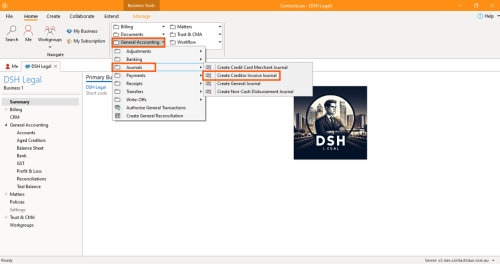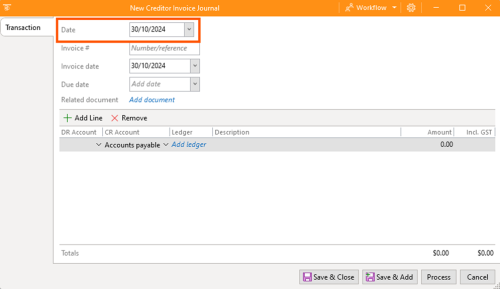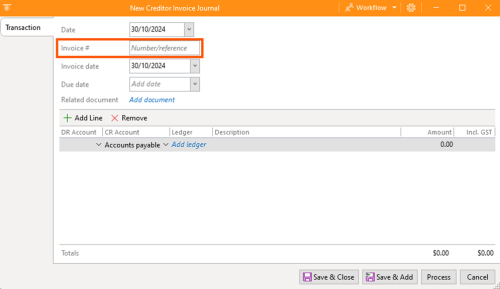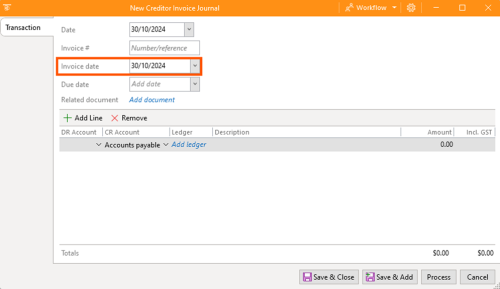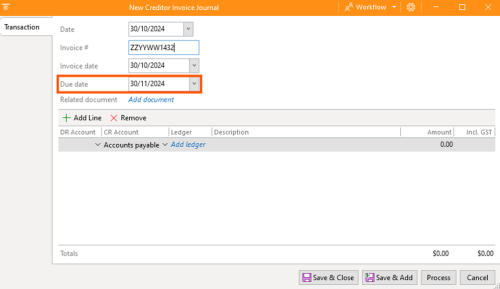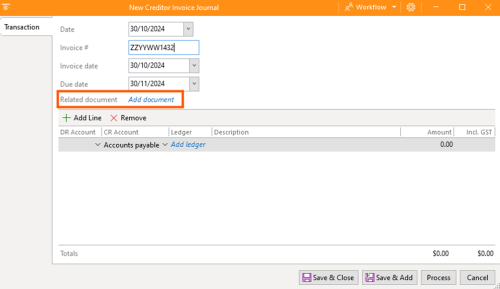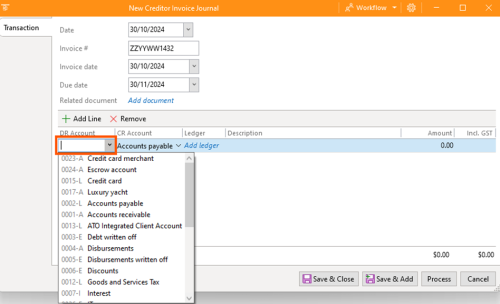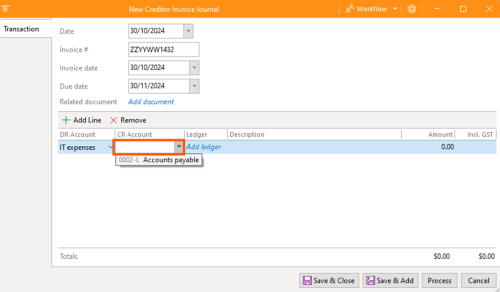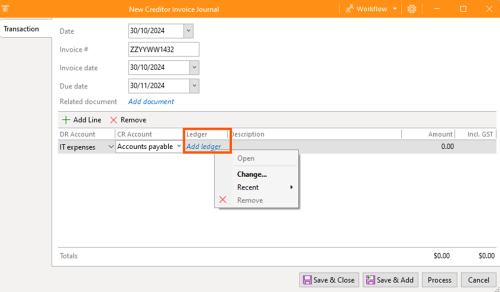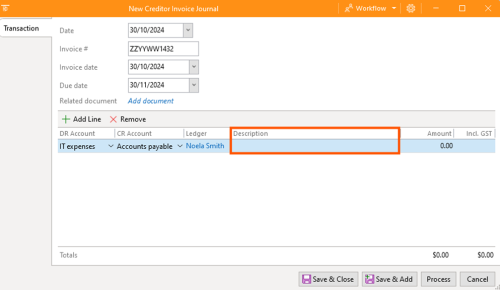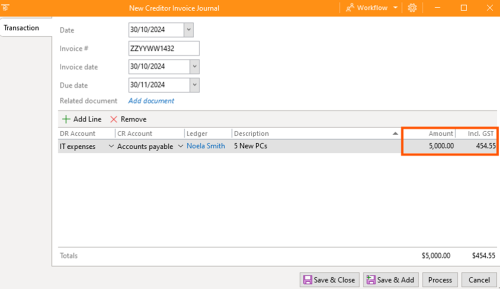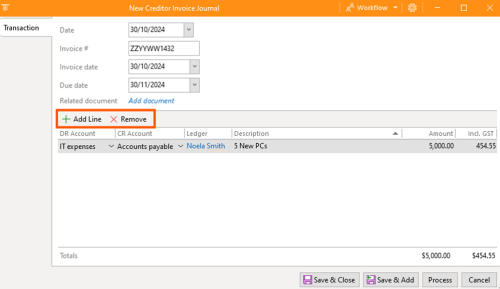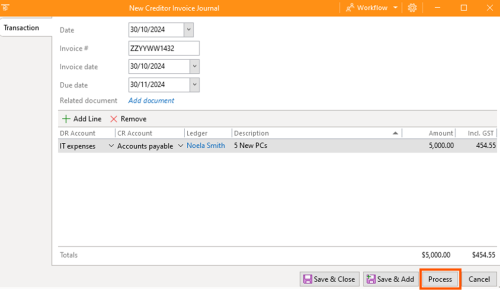How-To:Creditor Invoice: Difference between revisions
No edit summary |
No edit summary |
||
| Line 1: | Line 1: | ||
{{DISPLAYTITLE:How to Record Creditor Invoices}} | {{DISPLAYTITLE:How to Record Creditor Invoices}} | ||
In [[ContactsLaw]], creditor invoice journals provide a systematic way to record and track [[Creditor Invoice|invoices]] received from service providers. This structure helps maintain organised financial records and ensures transactions are efficiently managed for each [[business]]. | In [[ContactsLaw]], creditor invoice journals provide a systematic way to record and track [[Creditor Invoice|invoices]] received from service providers. This structure helps maintain organised financial records and ensures transactions are efficiently managed for each [[business]]. | ||
== 1. Getting Started == | == 1. Getting Started == | ||
Latest revision as of 17:43, 10 December 2024
In ContactsLaw, creditor invoice journals provide a systematic way to record and track invoices received from service providers. This structure helps maintain organised financial records and ensures transactions are efficiently managed for each business.
1. Getting Started
- Go to the General Accounting section within the ribbon group.
- Select Journals and click on Create Creditor Invoice Journal.
2. Specify Options
In the Creditor Invoice Journal window, several fields require input to accurately reflect the invoice details:
- Date: Set the date for recording the invoice, which can reflect past, present, or future transactions, depending on when the expense was incurred.
- Invoice Number: Enter the unique identifier provided by the creditor for this invoice.
- Invoice Date: Record the date the creditor issued the invoice.
- Due Date: Set the deadline by which the invoice payment is expected.
- Related Document: Upload the actual invoice file, providing documentation for the recorded transaction.
- DR Account: Specify the account to be debited for this expense.
- CR Account: Define the account that will be credited.
- Ledger: Identify the relevant creditor to link this transaction with the associated contact.
- Description: Provide a brief explanation of the invoice purpose or services received.
- Amount: Enter the transaction amount, excluding tax (or GST).
- GST: The default GST (Goods and Services Tax) in Australia is 10%. Modify if necessary to align with the tax specifics for the transaction.
- Add and Remove Line: Use this option to add or remove line items in the invoice, allowing flexibility in detailing multiple charges.
- Process: After reviewing the entered details, click Process to finalise and save the creditor invoice journal entry.
This step-by-step process ensures that all aspects of creditor invoices are thoroughly recorded, providing transparency and accuracy in the firm’s financial documentation.


